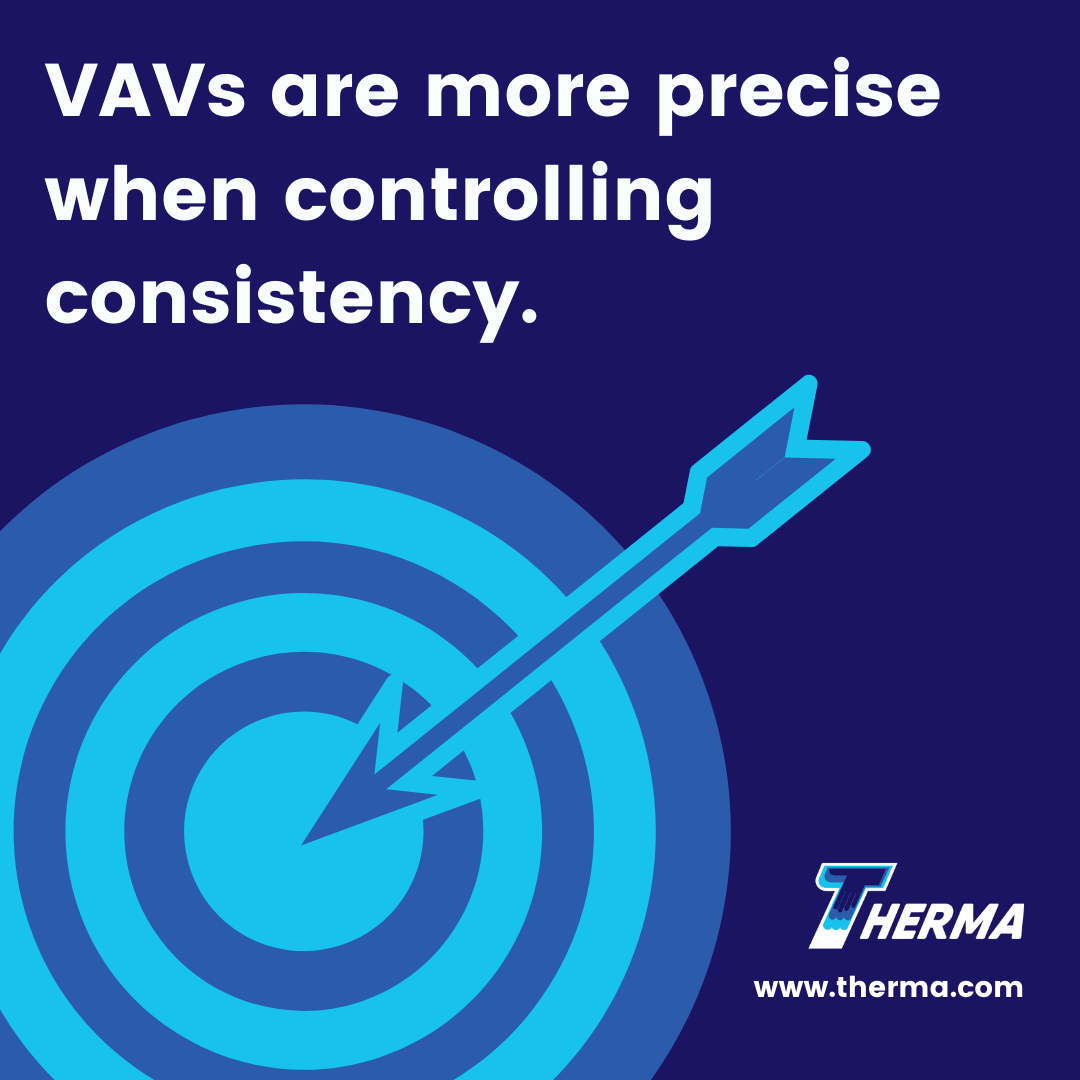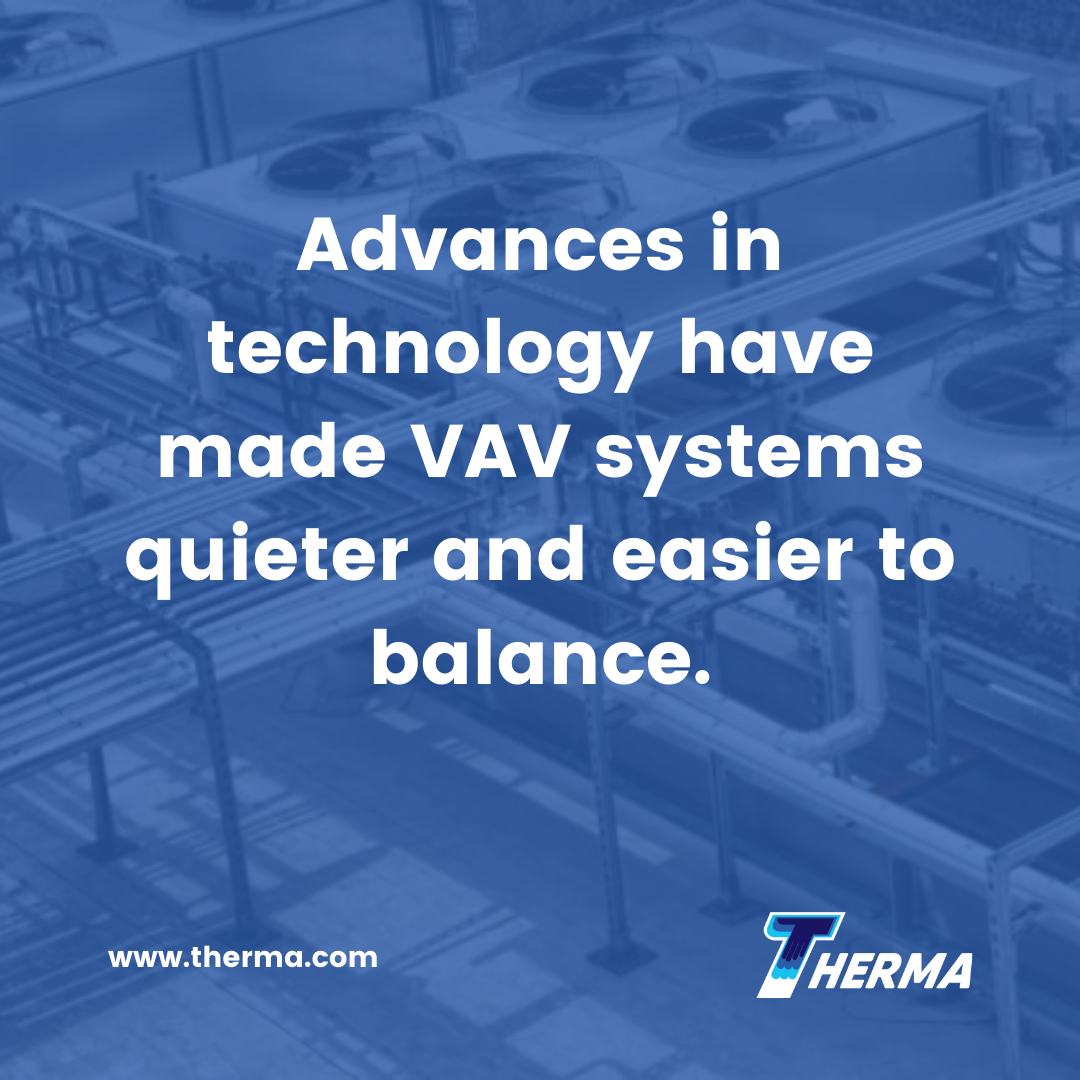Recent Advances in Variable Air Volume Systems and Their Advantages
By Freedom Ahn
Variable air volume (VAV) HVAC systems provide a more energy-efficient and capable way of cooling and heating modern buildings. They are often used to replace constant air volume (CAV) HVAC systems and improve indoor air quality. VAV systems provide a higher level of precision when it comes to keeping the temperature consistent in various zones of a building.
 Buildings used to be constructed with a central area that allowed light and airflow to reach the middle of the building through a skylight-enabled stairwell or a courtyard. However, with an increased demand for usable square footage, those areas have been mostly eliminated.
Buildings used to be constructed with a central area that allowed light and airflow to reach the middle of the building through a skylight-enabled stairwell or a courtyard. However, with an increased demand for usable square footage, those areas have been mostly eliminated.
Now, modern construction builds generally lead to two zones of rooms: perimeter (shares a wall with the outside) and core (entirely enclosed). Perimeter rooms require both heating and cooling, while core rooms typically require heat only (although at a different rate than perimeter rooms).
CAV and VAV systems differ primarily in their ability to customize airflow to individual rooms or zones:
- CAV systems deliver a controlled air volume with an unchanging rate of airflow, having either an “on” or “off” position for each room.
- VAV systems can adjust airflow rates as needed to deliver controlled air volume that changes based on the need for perimeter or core rooms.
Compared to conventional systems, VAV systems can save as much as 30 percent in energy costs. Early VAV systems were cooling only, with separate heating systems for perimeter rooms. Modern technology allows for VAV system construction that can handle successful cooling and heating management.
Advances in Variable Air Ventilation Systems
Previous VAV systems were designed to vary the cubic feet per minute (cfm) fan output based on the total cumulative needs of the zones. Fans were sized to accommodate the maximum probable load, frequently leading to varied static pressure in the main duct. The fan’s output was controlled by a sensor that adjusted it using either fan inlet vanes or a damper at the fan outlet.
These systems were difficult to successfully balance, often resulting in drafts or air noise, depending on the zone damper positioning. Thankfully, recent advances in variable air volume systems, such as those listed below, have resolved these problems.
VAV Terminal Units
A VAV terminal unit is a small box located in the supply air duct at the outlet of each zone. It receives air from the central unit and uses a butterfly damper to modulate airflow on direction from an automatic air control system. VAV terminal units are also pressure-independent and can control the minimum and maximum cfm to balance airflow at each terminal.
Improved Motors and Fans
Improved motors and direct-drive fans set up in a fan array deliver even more advantages for VAV systems, including increased efficiency, less maintenance, a smaller footprint and greater redundancy. Removing belt and pulley systems reduces the noise levels, and by instituting warm-up cycles for fans, wear-and-tear levels stay at a minimum. Additionally, you can size fans using the lowest possible energy consumption.
Digital Controls
By being able to program heating and cooling systems room by room, you can be sure of indoor-air-quality (IAQ) while delivering the highest possible levels of comfort and efficiency from zone to zone. Digital controls can manage extremely complex functions and provide a constant stream of data to a central processing unit (CPU). The CPU can, in turn, generate energy usage reports, analyze system performance and remotely change the system parameters for tighter control.

These recent advances in VAV systems, coupled with the relative ease of installation, make them a preferred choice over CAV systems for modern buildings that contain zones with varying HVAC requirements. The additional long-term cost and energy savings associated with VAV systems can play an important part when considering ventilation options.
Biography
Freedom Ahn, MBA, is an expert business & technology writer specializing in AI, blockchain, mechanical engineering, and physics (incl. engineering physics); a self-professed supply-chain geek; and
an award-winning short-fiction author & playwright. She is also a freelance American-Japanese translation/transcreation consultant.
References
- https://www.ny-engineers.com/blog/ventilation-system-comparison-cav-and-vav
- https://pdhonline.com/courses/m252/m252content.pdf
- https://www.amca.org/assets/resources/public/documents/Introducing%20the%20Fan%20Energy%20Index%20Metric.pdf
- https://www.amca.org/advocate/energy-efficiency/about-fan-energy-index/








